Differential Equations
These equations, containing a derivative,
involve rates of change – so often appear
in an engineering or scientific context.
Solving the equation involves integration.
The order of a differential equation is given by the highest derivative used.
The degree of a differential equation is given by the degree of the power of the highest derivative used.
Examples

Types of differential equations :-
- First order Differential Equations
- First order Linear Differential Equations
- Second order Linear Differential Equations
- Second order non – homogeneous Differential Equations
- Examples of Differential Equations
First order Differential Equations
Solving by direct integration
The general solution of differential equations of the form
 can be found using direct integration.
can be found using direct integration.
Substituting the values of the initial conditions will give
Example
Solve the equation

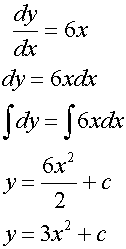


Example
Find the particular solution of the
differential equation

given y = 5 when x = 3
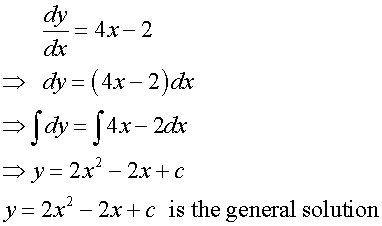

Example
A straight line with gradient 2 passes through
the point (1,3). Find the equation of the line.
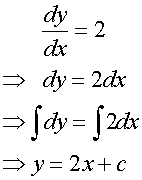

Variables Separable
A variables separable differential equation is one
in which the equation can be written with all the terms
for one variable on one side of the equation, and the other
terms on the other side.
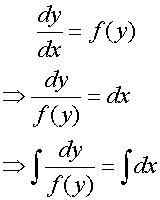
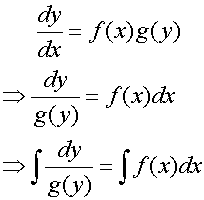
Example
Find the general solution of the differential equation


Example
Find the general solution of the differential equation


Example
Find the particular solution of the differential equation

given y = 2 when x = 1

Partial fractions are required to break the left hand side of the equation into a form which can be integrated.
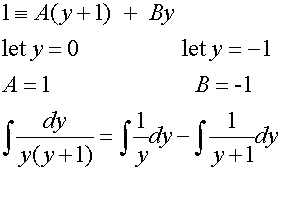
so

which integrates to general solution

substitute values for particular solution
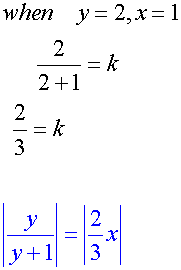
Linear Differential Equations
These are first degree differential equations.

describes a general linear differential equation of order n,
where an(x), an-1(x),etc and f(x) are given functions
of x or constants.
Louis Arbogast introduced the differential operator
D = d/dx , which simplifies the general equation to
![]()
or

If f(x) = 0 , the equation is called homogeneous.
If f(x) ≠0 , the equation is non-homogeneous
First order Linear Differential Equations
To solve equations of the form

1) Express in standard form

where P and Q are functions of x or constants
2) Multiply both sides by the
Integrating Factor ![]()
3) Write 
4) Integrate the right hand side,
use integration by parts if necessary
![]()
5) Divide both sides by the integrating factor.
This gives the General solution.
6) Use any initial conditions to find
particular solutions.
Example
Find a general solution of the equation

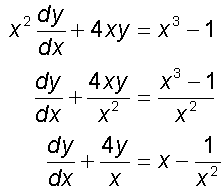
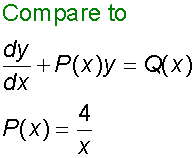

so

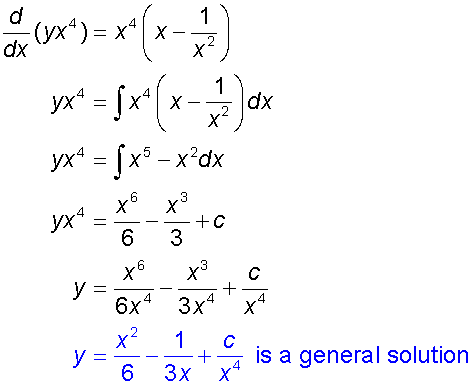
Example
Find a general solution of the equation

where x ≠2 , and hence find the particular solution
for y = 1 when x=-1
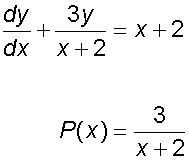

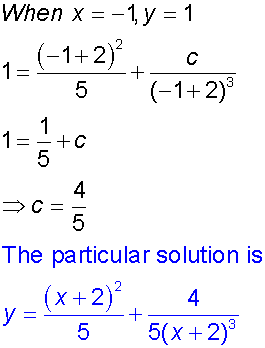
Second order Linear Differential Equations
To solve equations of the form

1) Write down the auxiliary equation
am2 +bm + c = 0
2) Examine the discriminant of the auxiliary equation.
3) For real and distinct roots, m1 and m2,
the general solution is
![]()
4) For real and equal roots,
the general solution is
![]()
5)For complex conjugate roots,
m1= p + iq and m2 = p - iq ,
the general solution is
![]()
6) Use any initial conditions to find the particular solution.
Example
Find the general solution of the equation

and the particular solution for which
y = 7 when x=0 and dy/dx = 7
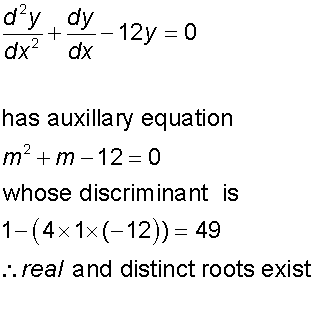
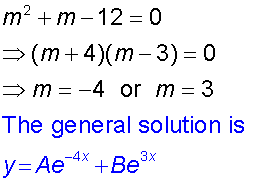
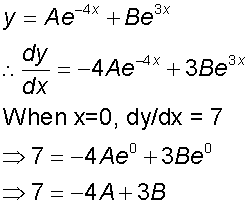
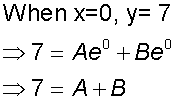

Example
Find the general solution of the equation

and the particular solution for
y=0 and dy/dx = 3 when x=0
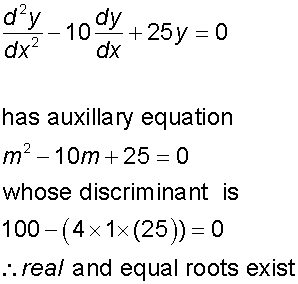
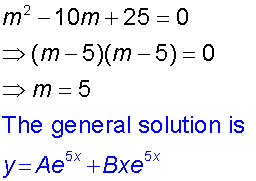
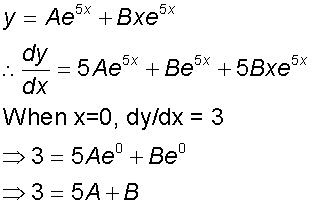
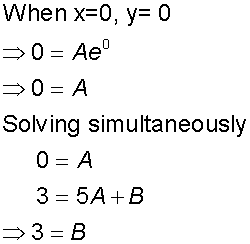
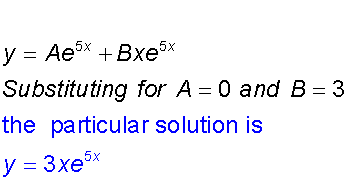
Example
Find the general solution of the equation

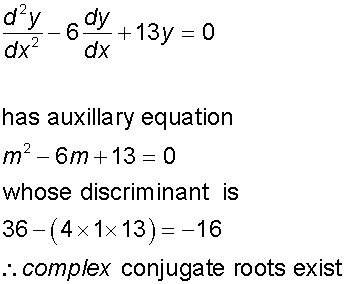
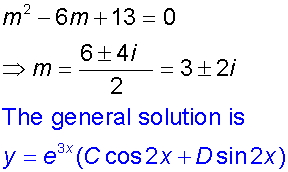
Second order non – homogeneous Differential Equations
The solution to equations of the form

has two parts, the complementary function (CF)
and the particular integral (PI).
so Q(x) = CF +PI
The CF is the general solution as described above
for solving homogeneous equations .
The Particular Integral is found by substituting
a form similar to Q(x) into the left hand side equation,
and equating co-efficients.
- If Q(x) is a linear function, try y = Cx +D
- If Q(x) is quadratic, try Cx2 +Dx +E
- If Q(x) is wave function, try CSinx +Dcosx
- If Q(x) is a constant, try y = C
- If Q(x) is ekx, try y = Cekx
The PI cannot have the same form as any of the terms in the CF,
so care has to be taken
to ensure that this is not the case.
In such a situation, an extra x term is usually
introduced to the PI.
A particular solution is found by substituting initial conditions into the general solution. Do not just use the CF!!!
Example
Find the general solution of the equation


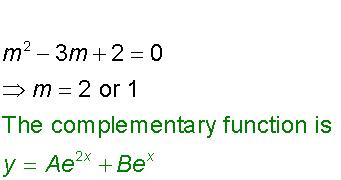
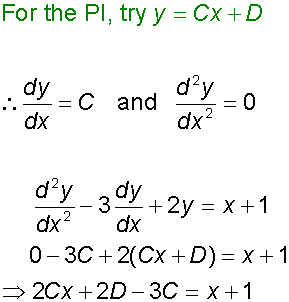

Example
Find the general solution of the equation

and the particular solution for
y=0 and dy/dx = 5 when x=0
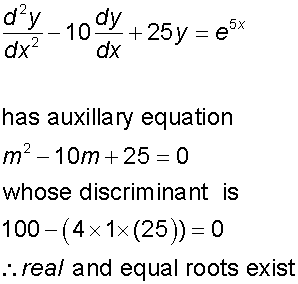
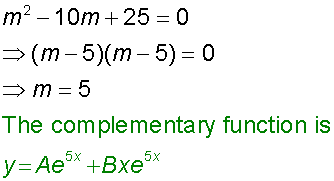


Now, substitute these back into the original equation

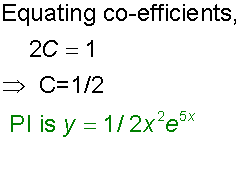

Now find the particular solution

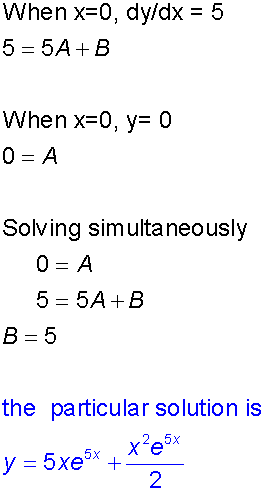
Phew!!
